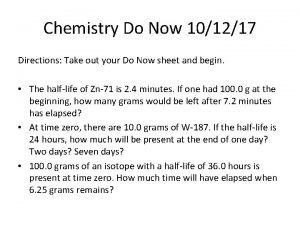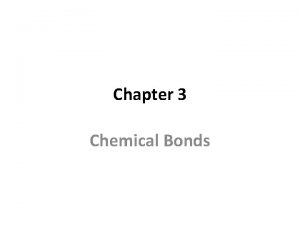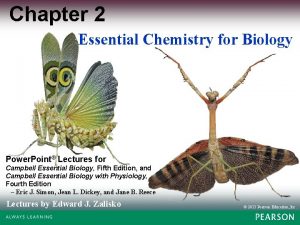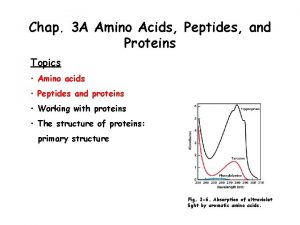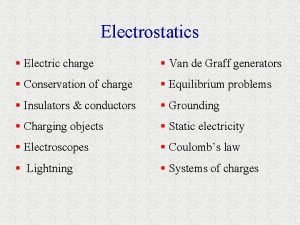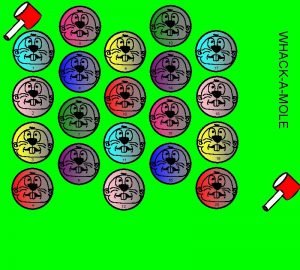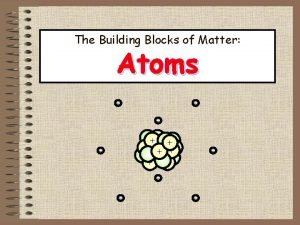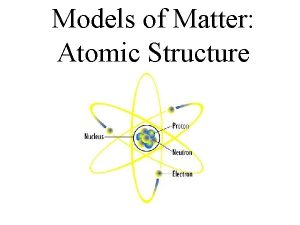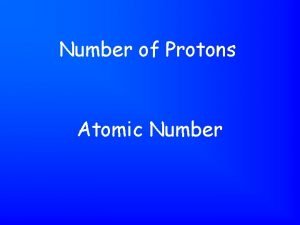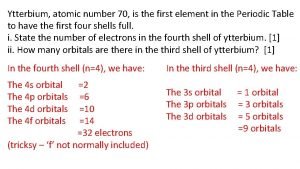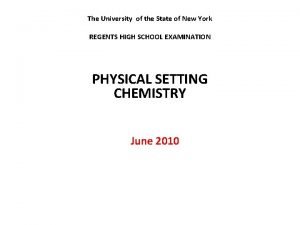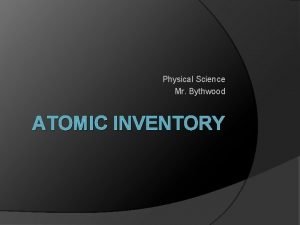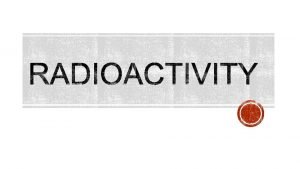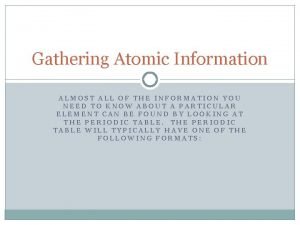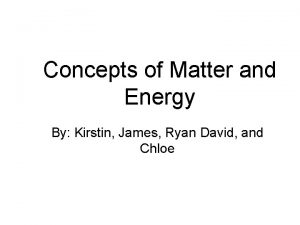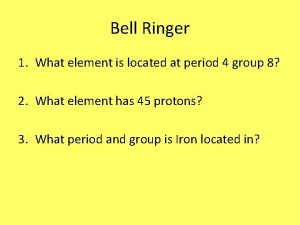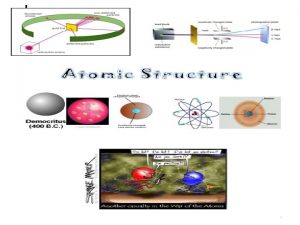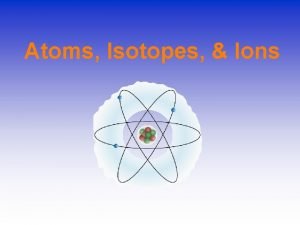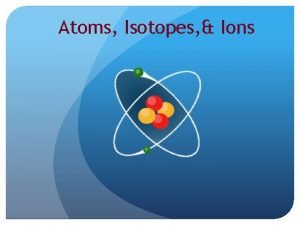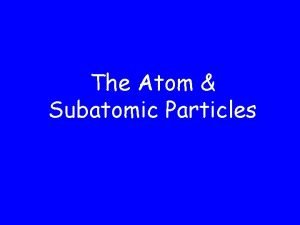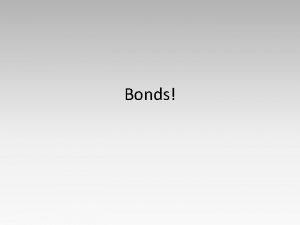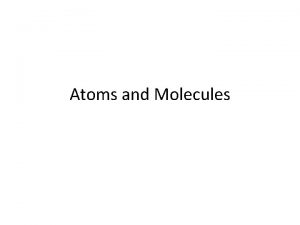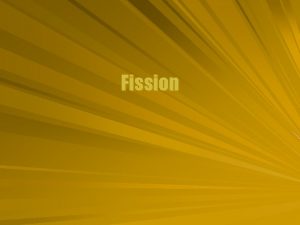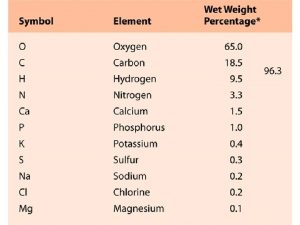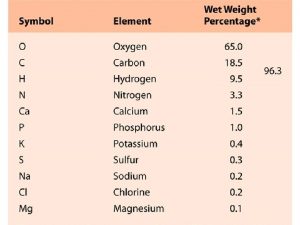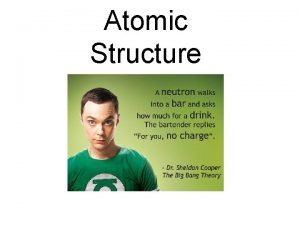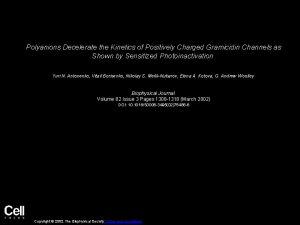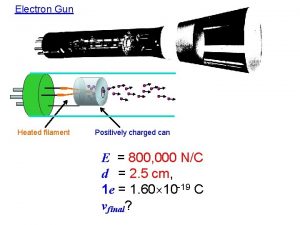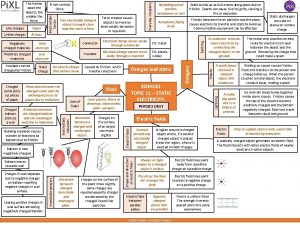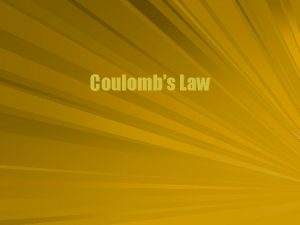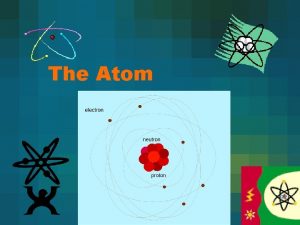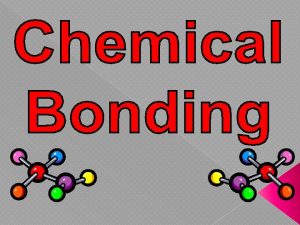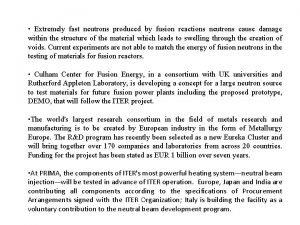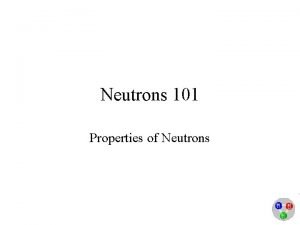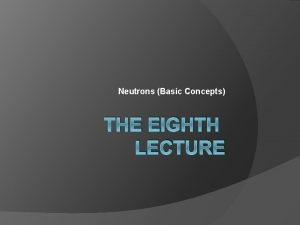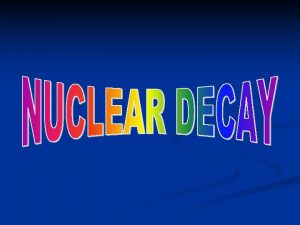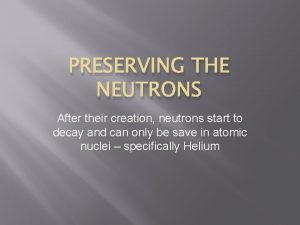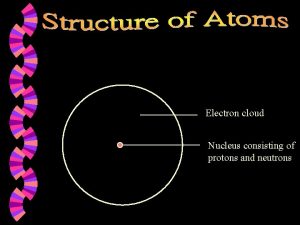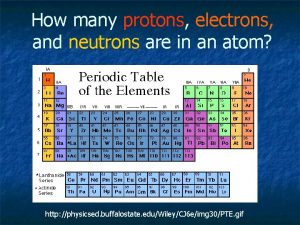Protons and neutrons Protons are positively charged Neutrons


























- Slides: 26


§ Protons and neutrons § Protons are positively charged § Neutrons are neutral § Nucleon – either a proton or a neutron.


§ Protons repel due to the electrostatic force. § What then stops the nucleus from exploding? § The nuclear force is an attractive force that acts between nucleons. § Also called the strong nuclear force, this force acts over a short range. § Neutrons in the nucleus act to shield the protons from each other and strengthen the attractive force.



§ Have the same outer electronic structure § Hence they are chemically identical.

§ Download at: http: //tinyurl. com/mbtpcmt § Have a play § For each element find: § The most abundant isotope § Least abundant, stable isotope



§ A stable nucleus needs to have a lower energy than the separate particles. § For example, a ball on a hill:






§ The total energy remains the same. § The total mass of the product will be different. § Determine whether energy is absorbed or released by calculating the change in mass. Increase in mass implies energy is absorbed. Decrease in mass implies energy is released.




§ Radioisotopes - the isotopes of an element that are radioactive. § Such nuclei are unstable and will emit particles and electromagnetic radiation. Two main uses of medical radioisotopes: § Diagnostic tool in imaging, for example in PET scans § Therapeutic techniques, where radiation is used to damage certain cells

§ There a few techniques for producing radioisotopes. § A nuclei can gain protons or neutrons or both. § Addition of neutrons produces isotopes of the same element. § Addition of protons will change the type of element.




§ As radioisotopes are not stable, the mass defect of the reaction is often negative, indicating that energy must be absorbed. § This energy can be supplied by the kinetic energy of the collision particle. § The kinetic energy of the collision particle must be greater than the binding energy in order for conservation of momentum to hold. § If the kinetic energy is equal to the binding energy, then the products would have no momentum.
 Which of the charges qa, qb, and qc are positively charged?
Which of the charges qa, qb, and qc are positively charged? Mikael ferm
Mikael ferm Positively charged atom
Positively charged atom What is a positively charged ion called
What is a positively charged ion called Positively charged atom
Positively charged atom Conjugated protein
Conjugated protein Coloumb units
Coloumb units Which scientist described a positively charged core
Which scientist described a positively charged core Protons and neutrons size
Protons and neutrons size How to find number of protons
How to find number of protons Lithium number of protons and neutrons
Lithium number of protons and neutrons Sulfur number of neutrons protons and electrons
Sulfur number of neutrons protons and electrons I am a gas with 8 protons and 8 neutrons
I am a gas with 8 protons and 8 neutrons 12c6 number of protons and neutrons
12c6 number of protons and neutrons Ytterbium atomic number
Ytterbium atomic number Basic atomic structure worksheet
Basic atomic structure worksheet Which equation represents sublimation?
Which equation represents sublimation? What is an atom inventory
What is an atom inventory Can an atom have more neutrons than protons
Can an atom have more neutrons than protons Proton neutron electron
Proton neutron electron Lithium protons neutrons electrons
Lithium protons neutrons electrons Can an atom have more neutrons than protons
Can an atom have more neutrons than protons How many protons does chromium-58 have
How many protons does chromium-58 have Democritus timeline
Democritus timeline 39k+ protons neutrons electrons
39k+ protons neutrons electrons 39k+ protons neutrons electrons
39k+ protons neutrons electrons U 238 protons neutrons electrons
U 238 protons neutrons electrons


